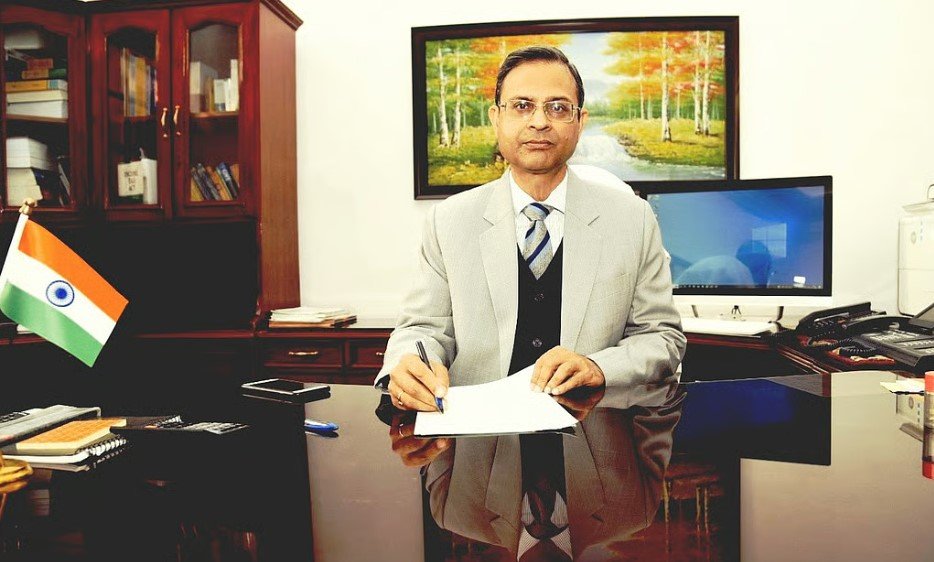Reserve Bank of India Governor Sanjay Malhotra assured on August 25, 2025, that the central bank stands ready to deploy policy measures if the impending 50 percent US tariffs disrupt India’s economic growth. Speaking at the FIBAC 2025 banking conference in Mumbai, he highlighted the RBI’s commitment to cushion affected sectors while maintaining focus on price stability and overall expansion.
RBI Prepares for Tariff Fallout
Malhotra emphasized that the RBI has ample tools to support the economy, drawing from past responses during crises like the Covid pandemic. He noted that the tariffs, set to begin on August 27, 2025, include a 25 percent reciprocal levy on Indian goods plus another 25 percent penalty for India’s purchases of Russian crude oil.
This move by the US aims to address trade imbalances, but Malhotra expressed optimism about ongoing India US negotiations potentially minimizing the blow. He pointed out that India’s exports to the US total around 87 billion dollars annually, representing about 2.5 percent of the nation’s GDP.
Experts suggest the tariffs could shave off 0.2 to 0.5 percentage points from India’s GDP growth if fully implemented without mitigations. However, Malhotra stressed that the central bank would provide liquidity and targeted aid to hard hit areas to keep momentum going.
Key Sectors at Risk
Several Indian industries face potential challenges from these tariffs, based on recent trade data.
- Textiles and apparel: Account for a significant portion of exports to the US, worth over 10 billion dollars yearly, and could see reduced demand.
- Pharmaceuticals: Exports valued at around 15 billion dollars might experience pricing pressures.
- Gems and jewelry: This sector, exporting about 12 billion dollars, is vulnerable due to high value items.
- Electronics and agri products: Combined exports exceed 20 billion dollars, with possible supply chain disruptions.
Analysts from firms like Morgan Stanley warn of up to 80 basis points GDP impact if tariffs persist, urging quick policy easing.
Malhotra reassured that India’s economic fundamentals remain strong, with diversified trade partners helping to offset risks.

Basel III Norms on Horizon
Shifting focus to banking reforms, Malhotra announced plans to roll out Basel III norms for credit and market risks starting April 2027. This timeline allows banks time to prepare for stricter capital requirements aimed at enhancing financial stability.
Draft guidelines on credit risk and expected credit loss models will be released soon, he added. These changes align with global standards to better manage operational risks in India’s growing banking sector.
The implementation follows a phased approach, building on earlier adoptions. Banks will need to bolster their risk assessment frameworks, which could lead to improved lending practices and reduced non performing assets.
This move comes as India’s banking system handles over 200 trillion rupees in assets, with recent stress tests showing resilience against economic shocks.
Monetary Policy Balances Growth and Inflation
Malhotra reiterated that the RBI’s monetary policy prioritizes price stability without ignoring growth needs. The repo rate stands at 5.5 percent after a 100 basis point cut earlier in 2025.
He cited examples where the bank adjusted rates during low inflation periods to spur activity. With current inflation around 4.5 percent, within the target band, the RBI remains vigilant amid global uncertainties.
The governor lowered the FY26 GDP growth forecast to 6.5 percent in April, factoring in initial tariff proposals. Yet, he affirmed that policy tools would adapt if external pressures intensify.
| Aspect | Details |
|---|---|
| Current Repo Rate | 5.5 percent |
| FY26 GDP Projection | 6.5 percent |
| Inflation Target | 4 percent (plus/minus 2 percent) |
| Recent Rate Cuts | 100 basis points in early 2025 |
| Forex Reserves | 695 billion dollars, covering 11 months of imports |
This framework has proven effective, as seen in steady credit growth of about 15 percent annually.
Building Economic Resilience
India’s foreign exchange reserves at 695 billion dollars provide a solid buffer, covering 11 months of imports, Malhotra noted. This positions the country well against currency volatility from tariffs.
He highlighted ongoing efforts to strengthen trade ties with regions like Europe and Southeast Asia to diversify exports. Recent data shows India’s overall exports reached 825 billion dollars in FY25, with imports at 915 billion dollars, indicating a manageable deficit.
Amid geopolitical tensions, including the Russia Ukraine conflict, India’s strategic oil purchases have been balanced carefully. Malhotra’s comments align with Finance Secretary statements expecting limited direct GDP hits.
The governor also touched on improving banking grievance systems, urging faster resolutions to build public trust.
As India navigates these challenges, readers are encouraged to share this article and comment below on how you think tariffs might affect everyday prices or jobs. Your insights could spark important discussions.
